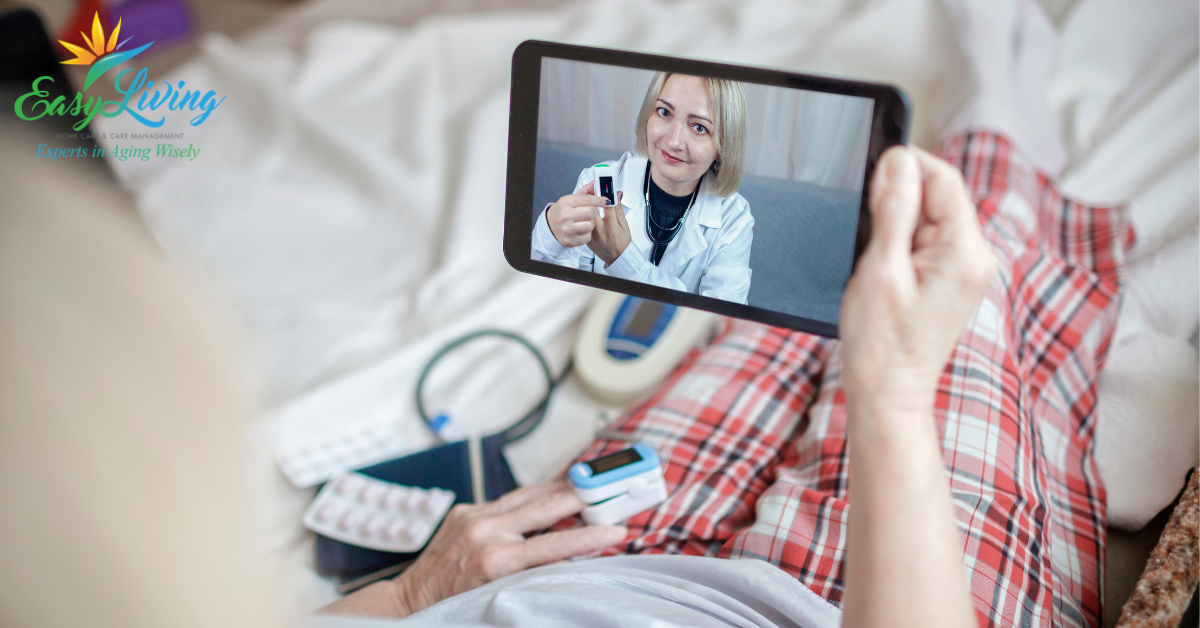We’ve offered our view on what home care should look like in the 21st century and where it’s currently often falling short. Technology plays a key role in that vision, enabling us to solve various problems that have plagued eldercare and healthcare for too long.
Technology is not the end all, be all…but it must be part of the solution. Why? To address gaps and create connections and monitoring that have led to treatment plans not working in “real life”. And, to make data-driven decisions and build evidence-based programs.
While these things may sound obvious, many still feel skeptical about things like “telehealth” and “remote patient monitoring”. Are these just fads or stop-gap measures for situations like the pandemic? Are they really practical? And, most importantly, does remote patient monitoring actually work? In keeping with what we said above, let’s make decisions based on evidence rather than something sounding cool.
Evidence: Does Remote Patient Monitoring Work?
To put it, simply, yes, remote patient monitoring works. Here’s some of the research:
- A large study of over 3,000 home health care patients with COPD or CHF: remote patient monitoring and technology-enabled care paths reduced patients’ readmission rate 15% with $175K month average cost savings.
- A remote patient monitoring and telehealth program for diabetes resulted in 18% improvement
in patient care plan compliance and 50% less crisis-driven visits. - A literature review of studies done from 2000-2018 on remote patient monitoring effectiveness concluded telemonitoring appears to maximize patient care and effectiveness of treatment.
- Another study of high-quality remote patient monitoring research, showed that remote patient monitoring showed promise in improving outcomes for patients with conditions such as obstructive pulmonary disease, Parkinson’s disease, hypertension, and low back pain.
- Many studies also show benefits such as better access to care (especially relevant to older adults); improved quality of care; peace of mind; improved support, education and feedback.
Usefulness: What Problems Does Remote Patient Monitoring Solve?
The data clearly show evidence that remote patient monitoring works. But, let’s dig deeper. Why do we need remote patient monitoring? Here are the problems it addresses (and how):
Problem: patient compliance, ability to follow up and manage treatment in a real life scenario
Remote patient monitoring gives patients tools for better treatment compliance at home. Medication errors and not following various discharge instructions account for many hospital readmissions and even deaths. Many elderly patients, in particular, have multiple conditions, sensory difficulties (hearing or vision deficits), and cognitive issues that contribute to this. Remote patient monitoring and telehealth provide tools to make compliance easier. Additionally, they help spot compliance issues quickly.
Problem: providers often can’t see what is really happening to make better treatment decisions and improve care. They have a limited window when the patient is visiting them or in the hospital, not knowing what factors may be affecting treatment.
Remote patient monitoring connects the dots, gives practitioners a window into what is happening for consistency. In the past, this often resulted in elderly patients needing to move to care facilities to be monitored or going to the hospital unnecessarily. Now, remote patient monitoring makes it possible for physicians to get a real-time picture of the situation to develop or adjust treatment. Care coordinators can recommend tailored support services accordingly.
Problem: an issue that could be addressed turns into a crisis
Almost every issue that remote patient monitoring spots can be addressed better because they’re discovered sooner. Unfortunately, patients are not always great at monitoring and reporting concerns. They may be confused by doctor’s/discharge instructions or feeling too unwell. The patient may either contact the doctor’s office constantly or fail to notice/report something. Even for elders who have family caregivers in the home, this happens. Caregivers can be just as overwhelmed and unsure of what to do. Remote patient monitoring spots red flags, taking out much of the human error factor.
So, when might your loved one need remote patient monitoring?
- Upon returning home from the hospital
- If they have conditions like COPD, CHF, Parkinson’s, or high blood pressure/cardiac issues
- The doctor has asked you to track vital signs or you’ve had multiple hospitalizations/emergencies
- When they’re experiencing cognitive problems (Alzheimer’s, other forms of dementia, mild cognitive impairment) and need to take medications or follow treatment plans
- There are signs of difficulty managing medications or they take multiple medications or meds that need to be adjusted frequently
- Anytime there’s a history or high-risk of falling (contact us for a free fall risk assessment)
{{cta(‘487a4b35-1dd9-4a51-8502-ef861421cb9d’,’justifycenter’)}}
User Experience: How Does Remote Patient Monitoring Work?
Care technology makes it possible to age safer, smarter, and healthier at home. We build a plan according to our client’s situation–from data-driven assessments. Our targeted programs, such as our COPD, CHF and Falls Prevention programs, use evidence-based interventions so the solutions work.
Each remote patient monitoring program includes:
- Custom, tailored-to-you assessments to spot issues before they spiral into larger problems.
- Manual or digital tracking of key vitals to prevent health deterioration and hospitalizations.
The technology is convenient and unobtrusive. We meet you where you are, with easy-to-use tools and communication via secure messaging, surveys, email, and text. To understand more about how this might work for you or your loved one, we’ll give you a personalized walkthrough and answer all your questions. Contact us today!

